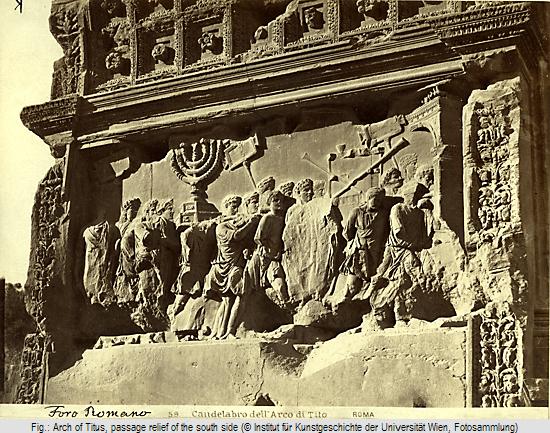After the conquest and destruction of Athens the Persians under Xerxes carried off the statues of the Tyrannicides Harmodios and Aristogeiton, the first public-political monument of Greece. Two conclusions are apparent from this, firstly, what type of character - promoting an eminent identity - this statue group embodied, since the Athenians commissioned a replacement group immediately after the end of the war. And secondly, in pursuit of which programmatic character such thefts and transfers occurred. Nothing could more clearly express the superiority of the victor than the robbing of works of art of religious, national or political significance, which were of central importance for the self-esteem and national identity.
During the Hellenistic and Republican period a change in values took place. At this point the aesthetic and material value of the booty came to the fore. Roman authors have handed down to us extensive reports of triumphal processions in Rome, in which stolen cultural property from the cities and sanctuaries of southern Italy, Greece and the Orient were paraded as part of the spoils of war. Livy wrote: ... here, a beginning was made to rave about Greek works of art, yet also a beginning of plundering everything sacred and profane without distinction (Liv. XXV 40).
Entire shiploads of bronze and marble statues, of paintings, and of complete libraries, arrived at Rome. According to Pausanias, Nero is said to have brought from Delphi to Rome alone 500 bronze statues of gods and men. The extent of this transfer of cultural property induced one to speak of a disastrous 'exhaustion of the Greek cultural lands'. A memorable example for the Roman period is the plundering of the Temple of Solomon, depicted in one of the passage reliefs from the Arch of Titus in Rome (fig.).

Theft, plundering, and destruction of cultural property as a visible symbol of victory continued after the end of the Roman Empire. Neither Enrico Dandolo, the commander of the Fourth Crusade, showed restraint during the ruthless plundering of the Byzantine capital of Constantinople, nor were the Europeans in Central and Latin America in any way moderate. The destruction of the Parthenon in 1687 by the troops of Morosini followed the removal of countless antiquities from Athens. Napoleon as well shamelessly looted the regions which he occupied with the aid of his art commissioners.
The ideals of the French Revolution and the massive and unprecedented thefts of cultural objects brought about a new understanding of the concept of a monument in the post-Napoleonic era. In the course of the 19th century fundamental guidelines for the protection of cultural property during times of military conflicts were worked out. Upon the greatest plundering of Europe's cultural property during the Second World War, however, they had no influence. "Führermuseum", "Sonderauftrag Linz", "entartete Kunst" are only a few of the keywords which shed light on the attitude of the Nazi dictatorship towards international cultural property. The consequences are well-known. Much was destroyed in military conflict, much in storage locations, while quite a few works of art were transported to the east and west by the later victorious powers. Some still today partially regard these cultural properties as 'compensation for their own losses'.
The crises of recent times, which have led to systematic destructions and plundering of archaeological sites and collections and to devastations of cultural property of all kinds, are certainly still alive in our memories. I mention only the political turmoil in Albania in the early 1990s, the reports from Afghanistan and the dreadful images from the war carried out in the former Yugoslavia. These premeditated destructions have been accurately described by the Council of Europe as 'cultural cleansing' and have shown to the world that the identity of a nascent nation or state is identified with the cultural property of the respective land. In this manner it has also been attempted to impose a damnatio memoriae on the cultural identity of an entire land by destroying its cultural monuments, collections, museums and churches.
The theft of old works today, or their violent destruction, does not mean that one wants to rob one's opponent of his protecting divinities in ancient tradition. Frequently today it has mostly to do with wanton destruction, with the attempt to eradicate a part of one's own history, with the possession of an expensive, luxurious treasure, with realising maximum profit on the art market with a plundered object. Therefore - of course - no military conflict is necessary.
![]() © Hubert D. Szemethy
© Hubert D. Szemethy
e-mail: hubert.szemethy@univie.ac.at
This article should be cited like this: H.D. Szemethy, Patterns of Art Theft, Looting and Plundering of Cultural Property, Forum Archaeologiae 55/VI/2010 (http://farch.net).